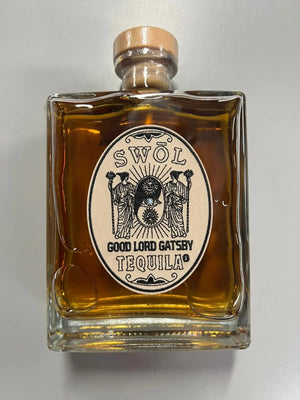Tequila is a beloved spirit with a rich heritage rooted in Mexico. Though there can be a wider range of different varieties, Blanco, Reposado, and Anejo are by far the most prevalent styles. To fully appreciate these tequilas, it’s essential to understand their differences. We will delve into the nuances of Blanco, Añejo, and Reposado tequilas, covering their production processes, flavor profiles, and suitable occasions for each.
Tequila, derived from the blue agave plant, is a diverse and complex spirit. Its classification is determined by the aging process, which influences its flavor, aroma, and overall character. Añejo, Reposado, and Blanco are the three main categories. Each offers a unique tasting experience.
This guide will explore the key differences between these three varieties, helping you make an informed choice based on your preferences. As an informed tequila drinker, you can evaluate a brand in a much deeper and more meaningful way when you possess this information.
What is Blanco Tequila?

Blanco, unlike what the name suggests, is a translucent spirit. It is an unaged expression of the tequila-making process. It undergoes the same roasting, fermenting, and distillation processes that all the other tequila varieties do, but without the aging process. This gives it a unique character.
Blanco tequila is the unaged expression in the trio. This really enables it to highlight the quality of the whole tequila production process - prohibiting the makers to hide behind a luscious aging process. Common flavor notes in Blanco include:
- Agave: Has a full Agave flavor
- Oak: Zero oak flavor
- Spices: No spices but a strong fruity profile
The color of the Blanco tequila is translucent. There is no color as that is only picked up from the aging process in the oak barrels. This makes it a revealing and simple product. It is an ideal expression to be made into cocktails as it is cheaper. Some ideas include:
- Sipping: It can be drunk in a snifter or on the rocks for a pure tequila taste.
- Cocktails: Ideal for all tequila cocktails including a Margarita, Paloma, and any new experiments.
What is Reposado Tequila?

Reposado tequila, which translates to "rested" in Spanish, is aged for a minimum of two months but less than a year in oak barrels. This brief aging period allows the tequila to develop a richer flavor than unaged Blanco tequila, while still retaining some of its original agave characteristics.
They offer a balance between the fresh, vibrant flavors of Blanco and the deeper, more complex notes that come with aging. Common flavor notes in Reposado include:
- Agave: Retains a noticeable agave flavor.
- Oak: Mild influence from the oak barrels, adding subtle vanilla, caramel, and light woody notes.
- Spices: Hints of spices like cinnamon and nutmeg.
Reposado tequila typically has a light golden hue, which it acquires from its time spent in oak barrels. The exact shade can vary depending on the duration of aging and the type of barrels used.It is versatile and can be enjoyed in various ways:
- Sipping: Its balanced flavor makes it suitable for sipping neat or on the rocks.
- Cocktails: Ideal for cocktails that benefit from a touch of oak and complexity, such as Margaritas or Tequila Sunrises.
What is Añejo Tequila?

Añejo tequila, meaning "aged" or "vintage," must be aged for at least one year but less than three years in oak barrels. This extended ageing process results in a tequila with a more profound, richer character compared to Reposado.
They are known for their depth and complexity. The ageing process imbues the tequila with rich, layered flavors, including:
- Oak: Stronger influence from the oak barrels, resulting in pronounced notes of vanilla, caramel, and sometimes chocolate.
- Agave: The agave flavor is still present but more subdued compared to Reposado.
- Spices and Nuts: Additional complexity with hints of spices, dried fruits, and nuts.
Añejo tequila has a darker amber color due to its extended time in oak barrels. The longer aging process also contributes to a smoother, more refined texture.It is best appreciated in ways that highlight its complexity:
- Sipping: Ideally enjoyed neat or with a splash of water to fully appreciate its depth and subtle nuances.
- Premium Cocktails: Suitable for high-end cocktails where the tequila’s rich flavors can shine through, such as a Tequila Old Fashioned.
Check Out - Everything You Should Know About Anejo Tequila
Key Differences Between Blanco, Añejo and Reposado Tequila

Aging Duration
- Blanco: None.
- Reposado: Aged for a minimum of 2 months and up to 1 year.
- Añejo: Aged for at least 1 year and up to 3 years.
Flavor Complexity
- Blanco: A strong peppery presence with fruit and agave.
- Reposado: Offers a balanced profile with a blend of fresh agave and subtle oak influences.
- Añejo: Features a more complex, richer flavor profile with pronounced oak, caramel, and spice notes.
Color and Appearance
- Blanco: Translucent and free from color.
- Reposado: Light golden hue.
- Añejo: Darker amber color.
Preferred Consumption Methods
- Blanco: Consume in any way depending on the quality. Ideal for shots/neat drinking as well as all cocktail ideas.
- Reposado: Versatile, suitable for both sipping and cocktails.
- Añejo: Best enjoyed neat or in premium cocktails.
Also Read - 10 Health Benefits of Tequila
We hope you have enjoyed reading about the different styles of Tequila. It can be confusing to differentiate between them, and their characteristics, as well as applying these to different brands. We hope we have made it easy for you! Have a look through our website to fall in love with your new favorite tequila brand today.































